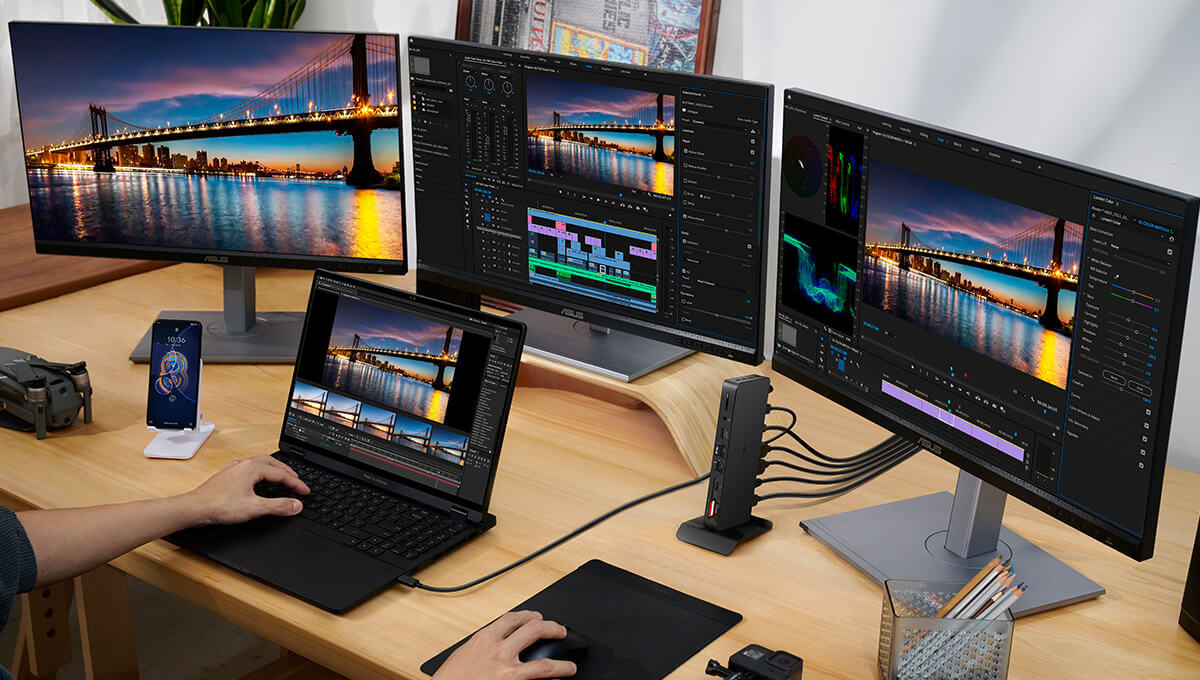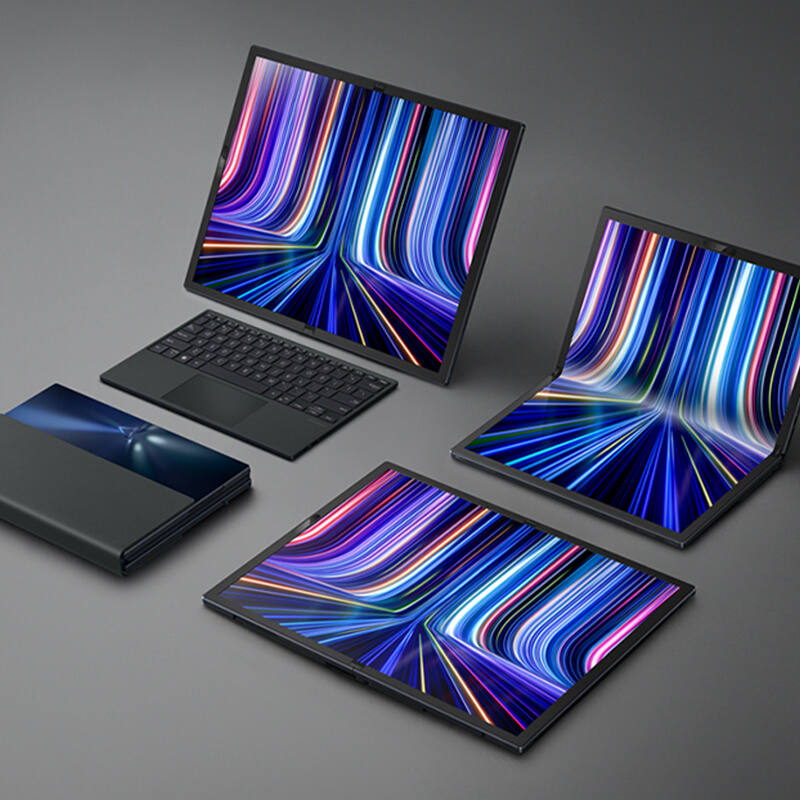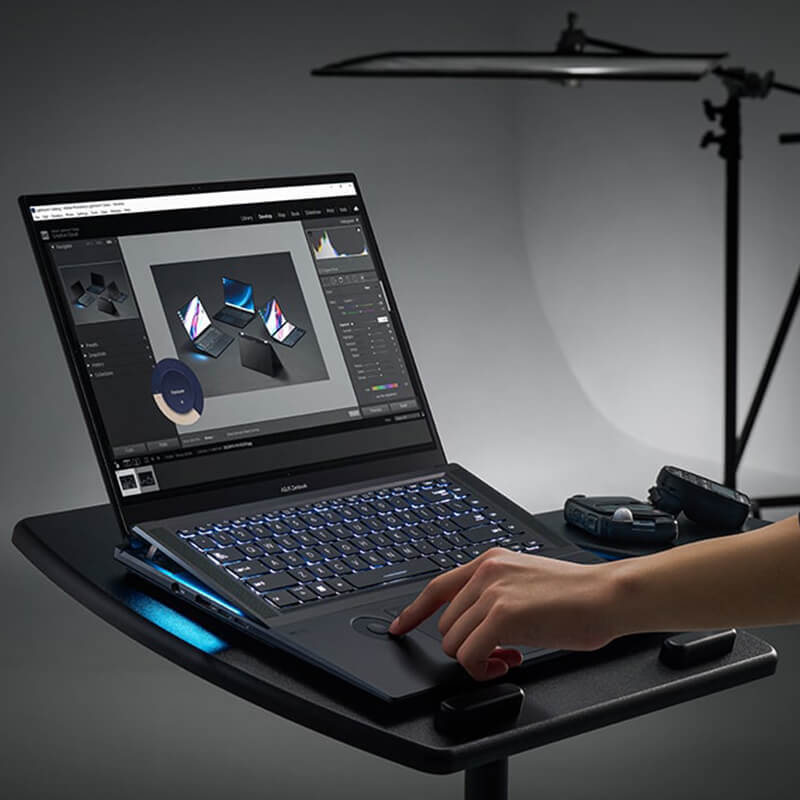
Oct 19, 2023
For various reasons, some technologies have more staying power than
others. Leveraging our experience here at ASUS, we’ve curated a list
of 10 technologies and technology trends of 2023 that have great
potential to be important in 2024 and beyond. Let’s dig in!
Artificial Intelligence Is All the Buzz!
If you’re interested in technology, you’ve likely already heard of
artificial intelligence. Talk of generative AI and language
model-based chatbots is everywhere, and for good reason —quickly
progressing AI technology is already finding its way into work as
well as everyday life.
AI-powered chatbots have become useful in increasing the speed of
generating text. They can help draft emails, create pieces of
marketing copy, or even translate text.
AI also supports many creative processes — from ideation through
verification of ideas to enhancement of created work. Language-based
AI models and generative AI seem to increase efficiency across many
tasks. For instance, creating graphics or other content is much
easier and faster using AI tools. Text-to-image AI models allow
users to generate graphics from scratch or enhance existing work.
Some creative apps already leverages AI to support the image editing
process, offering functions like automatic background removal or
recoloring, as well as more complex tools such as generative fill.
There are some concerns with using AI in the creative process,
however. A big one is the matter of credit attribution and
intellectual right protection. AI leverages machine learning from
databases of existing content and material to generate content, and
the rules regarding intellectual property rights and AI are still
being formed. Thus, many recommend that AI should only be used as a
source of inspiration and ideation for the time being, until the
rules regarding property rights are clarified.
Extended Reality Goes Mainstream
Extended Reality has been around for a while now, but 2023 seems to
be a year when this innovation went mainstream.
Extended Reality refers to Augmented Reality and Virtual Reality.
Sometimes, the metaverse also enters the conversation when talking
about Extended Reality. We can see more and more uses for AR & VR.
Previously reserved for tech gadgets and niche usages (such as
gaming), Extended Reality now has many common applications. For
example, ER is used in social media AR filters.
Extended Reality is something marketers and content creators should
pay attention to. The demand for Extended Reality content is
increasing, so creating ER content will likely prove a useful and
lucrative skill and a good promotional strategy in 2024.
Evolving Laptop Forms
Traditionally, laptops have come in a clamshell form factor. But the
form has been evolving, recently. For example, new components and
solutions are being added, such as the
ASUS Supernova SoM chip design
and AAS Ultra angled keyboard design in
Zenbook Pro 16X OLED. These advances help achieve levels of thinness and lightness that
were unimaginable just a few years ago. A good example is the 1 cm
thin, 1 kg light
Zenbook S 13 OLED.
Other form factors have also become more common in recent years.
This includes a 2-in-1 convertible format with a 360° hinge and
touchscreen (see
Zenbook S 14 Flip OLED) or a detachable keyboard format (see
ASUS Vivobook 13 Slate OLED) that serves as both a laptop and a tablet — and anything in
between.
In recent years, ASUS has launched dual-screen laptops as well, such
as the
ASUS Zenbook Pro 14 Duo OLED. The second screen helps extend working space without the need for
external devices. A unique
Project Precog
has also been announced as far back as in 2018 as an interesting
concept that can show what the near future of laptops may look like.
Another example of an innovative laptop is the
ASUS Zenbook 17 Fold OLED, announced during CES 2023. With an OLED screen that folds in the
middle, plus a detachable wireless keyboard, it offers six different
usage modes. It features a 12.5-inch or impressive 17-inch display
and is a very versatile and practical tool.
But ASUS doesn’t settle. We take what we’ve learnt in the past years
and work on delivering even more exciting laptop innovations that
offer real, practical benefits to users from all walks of life. Stay
tuned — are new ASUS innovations and useful, novel form factors
coming in 2024!
Gaming Moves to the Cloud
How we watch movies has changed a lot in recent years. Streaming
movies is an everyday reality for many people, and now a similar
option is available for gamers — thanks to the emergence of cloud
gaming. This novel solution allows users to play games without
having them stored on their computer’s hard drive. What that means
is that one can play games on demand, without having to wait for the
game to download. Cloud-based games are also available across
various devices, giving users unprecedented versatility and
flexibility when it comes to gaming. All you need are a computer and
a fast and stable internet connection.
5G Connects the World
Perhaps you’ve seen the video of a surgeon conducting an operation
while being located thousands of kilometers away, with the use of a
remotely controlled robotic arm? The doctor was taking advantage of
5G to do this.
5G is a mobile internet connection technology that was considered an
innovation just a few years ago. It is slowly becoming the standard,
now. 5G allows for a speedy connection, ever more important in the
connected world we live in. This tech translates into much faster
load times and minimal latency in everyday activities, making
smooth, immediate 4K streaming, uninterrupted videoconferencing, or
lag-free online gaming a reality.
Most new smartphones, such as the
Zenfone 10, already offer 5G compatibility. Many IoT (internet of things)
solutions take advantage of this technology as well, making true
smart cities a not-so-distant reality.
More and more internet service providers offer this option at a
reasonable price point, so the trend for 5G devices is definitely
moving forward.
WiFi 7
WiFi 7 is the latest generation of wireless internet connection
technology. This upgrade to the WiFi 6 standard not only offers a
much faster connection speed (up to 320 MHz, compared to 160 MHz of
WiFi 6) and higher bandwidth (tri-band). It also allows for
uninterrupted connection of more devices. WiFi 7 is a perfect
solution for those who cannot afford any lag when online. It’s a
welcome upgrade for competitive gamers, remote workers of various
kinds, or for those streaming in 4K.
Investing in a
WiFi 7 router
is something to consider, since the upgrade is bound to become the
new standard for device manufacturers. Even if you only own older
devices that are not compatible with WiFi 7, you will still benefit
from the ability to connect more devices to your network.
Cyber Security and Privacy
As more people use devices that are connected online, data security
and privacy have become a more prominent issue. Internet browsing
will soon become a much more private affair, thanks to the gradual
phasing out of tracking cookies. Cookies are pieces of code that
send information about your online behavior to advertisers and
software developers.
More and more device manufacturers and software producers are
forcing users to opt in for data tracking instead of setting it as a
default. This shift will translate into better security online,
reducing the risk of identity theft, scams, or data leaks.
IoT and Automation
In today's rapidly evolving industrial landscape, the Internet of
Things (IoT) and automation have emerged as transformative forces
for efficient business operation.
IoT refers to the network of
interconnected devices and sensors
that seamlessly exchange data. This connection allows for the
automation of many tasks — executing many processes without human
interference.
This innovation has revolutionized industries by enhancing
operational efficiency and by enabling predictive maintenance and
data-driven decision-making. The importance of this synergy lies in
its ability to optimize processes, reduce downtime, and streamline
resource utilization.
This development has practical benefits for end consumers, as new
products become available faster and costs decrease. As efficient,
smart production opens doors for more companies to enter industries
previously dominated by giants, consumers will have more choice in
the products they buy — from everyday commodities to high-end tech
gadgets or vehicles.
Healthcare Gets Smarter
Technology innovations are also revolutionizing healthcare. Not only
are hospitals and clinics becoming
smarter and equipment ever-more sophisticated, healthcare is becoming more accessible.
Wearable devices are one of the transformative forces behind the
emergence of smart healthcare, as they become more available, more
budget friendly, and easier to use.
Wrist trackers and smart watches
are providing users with a wide array of health-related data, such
as heart-rate and oxygen-level tracking, insights into sleep
quality, and other features. This is important because it offers
users insight into their own health and provides information that
they can use to address possible issues early on. The devices can
also provide wellness suggestions, such as sleep cycle adjustments
or reminders.
Green Tech
The wonders of technology often come at a cost, such as harm to the
environment. That is why more and more technology providers like
ASUS are making leaps to create a greener, more eco-friendly
production process to curb negative impacts on the environment by
creating more sustainable products and processes.
For example, many ASUS laptops come with
EPEAT® Gold
or
EPEAT® Silver
ecolabels to confirm that green manufacturing processes and
sustainable materials are used in production. Many ASUS products
also exceed ENERGY STAR® standards for energy efficiency, which
signifies how they help save power.
The use of sustainable materials for production, such as
post-consumer recycled plastic or post-industrial recycled metal —
or even recycled ocean-bound plastic — is another significant trend
that companies like ASUS are implementing in their production
processes.
Recently, ASUS has delivered its most sustainable laptop yet — the
ASUS ExpertBook B9 OLED. It is made utilizing green practices such as thixomolding
manufacturing technology to minimize impacts on the environment.
Plus, in making ExpertBook B9 ASUS has applied a carbon offset
concept to achieve a net-zero carbon footprint.
Sustainability is a trend that is on the rise, and ASUS is making
high-quality sustainable products that do not compromise on
performance.
To learn more about sustainability at ASUS, click the button below!
Discover How ASUS Sustains an Incredible Future













